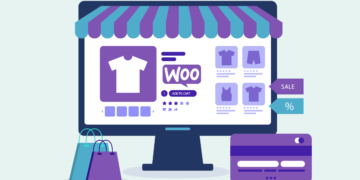
Success in transforming business opportunities into paying clients depends on developing a strategic method built to understand target audiences. It also involves qualifying leads early in the process. Lead segmentation according to their behavior types and interests to deliver more targeted messaging. After identifying prospective clients, you should develop personalized content to nurture them and establish lasting business relationships through continuous engagement.
During value proposition delivery, present your strengths and resolve client issues with a clear return on investment (ROI). Turning leads into customers requires the use of social proof and time-limited offers alongside a smooth sales procedure. Monitoring lead interactions will help improve your methods and guarantee that each interaction leads to conversion success. Expanding your lead scope should include purchasing business opportunity leads databases to maximize reach with potential prospects.
What is Lead Conversion?
Lead conversion transforms potential customers who enter as leads into paying clients. The conversion process includes connecting with leads through communications while building trust to present them with a value proposition that meets their requirements. Lead conversion begins by determining suitable prospects and delivering useful content supported by deals that guide target buyers toward decision-making. The end objective is directing the lead to take buying action to convert their preliminary interest into a closed sale.
Steps to Convert More Business Opportunity Leads
Follow these steps to convert more business leads:
Step 1: Understand Your Target Audience
Converting leads relies on a full understanding of the audience you aim to reach. Obtain valuable observations from leads to identify their specific problems, required solutions, and personal choices. Your targeted approach will help you develop solutions that match their preferences. Make customer profiles showing your ideal clients and their motivation to buy. Lead segmentation involves determining lead categories based on behavioral indicators, what interests them, or their level in the buying process.
Step 2: Qualify Leads Early
Not all leads are equal. Early lead qualification allows you to spend time with prospects demonstrating the greatest conversion chances. Lead scoring techniques rank leads according to how well they interact with your business and their activity levels. Determine important budget parameters, timing, and decision-making authority early for lead qualification.
Step 3: Nurture Leads with Personalized Content
After obtaining leads, you should provide content that addresses customers’ unique requirements through valuable, targeted information. Share relevant content, such as case studies, educational webinars, and informative blogs, to showcase solutions for their business problems.
Step 4: Engage and Build Relationships
Developing lead relationships creates trust between you and your clients, resulting in higher conversion outcomes. Respond quickly and helpfully to customer inquiries. Your leads will respond better to friendly contact through authentic and personalized communication.
Step 5: Present a Strong Value Proposition
You should emphasize to potential clients that your offering suits their business requirements best by focusing on benefits that address their needs instead of technical features. Display the features of your solution that address their particular challenges. Also, explain to prospects how your product adds value to their business profits.
Step 6: Use Social Proof
Customers tend to buy from your organization because they learn about positive results experienced by previous clients. Real success stories from satisfied customers should be showcased through testimonials to build trust with potential buyers. Your product transformation is best highlighted through in-depth examples of various clients who have gained the benefits.
Step 7: Offer Incentives and Limited-Time Offers
The limited-time incentives compel prospects to take immediate action toward conversion. Short-term exclusive discounts create a sense of urgency among potential buyers. Also, provide exclusive deals or early access to new products for a limited time.
Step 8: Follow-Up Consistently
Check out the prospects who displayed initial interest yet failed to convert into customers. Your continuous attempts to remind them about your offer will make them think again. Maintain contact across multiple channels, including direct emails, phone, or social media, to underline your value.
Step 9: Provide an Easy Sales Process
The smoother your buying process is, the more successful your leads are at converting. Facilitate buying through simple steps, which should include clear calls to action. Your business should offer multiple payment alternatives that meet various client preferences.
What is the Conversion Rate from Visitor-to-Lead Conversion Rate?
The measurement of visitor-to-lead conversion rate demonstrates your effectiveness in transforming online visitors into leads. Calculating the conversion rate requires dividing the lead quantity by the visitor count and multiplying the result by 100. When your website gathers 500 visitors and 20 of them submit the lead capture form, the conversion rate equals 4%.
Conclusion
Converting leads is a necessary business process to turn prospects into income-generating customers. This can be achieved by identifying target customers with early lead qualification while building relationships and providing value propositions. Converting business opportunities into customers depends on strategic relationship development and engaging communication approaches.
Effectively qualifying prospects allows you to create personal solutions while developing trust between your business and its customers. Regular communication with leads who receive clear value propositions with added incentives will strengthen conversions. A continuous optimization process relies on a tracking system that ensures a smooth sales process. Remember that a business opportunity leads database is an exceptional tool for reaching more suitable prospects and connecting with the right leads at the right time.























































